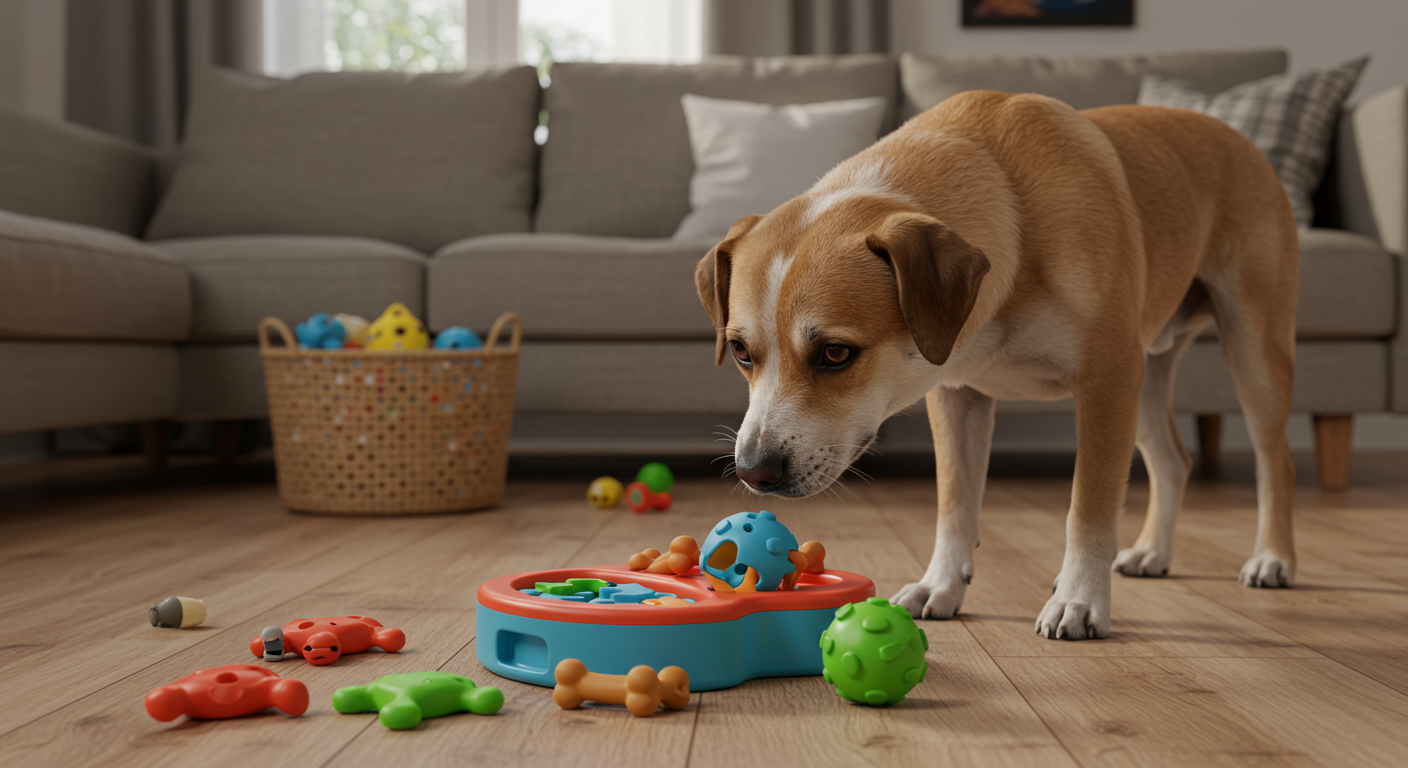Bringing joy and mental stimulation to your dog is one of the most rewarding aspects of pet ownership. Just like humans, dogs thrive on mental challenges and engaging activities. Enrichment games provide this crucial stimulation, combating boredom, reducing anxiety, and strengthening the bond you share. This guide is packed with fun, easy-to-implement ideas to boost your dog's brainpower and keep them happy and healthy.

Understanding the Importance of Mental Enrichment for Dogs
Dogs, especially those left alone for periods or those with less outdoor time, can easily become bored or anxious. Mental enrichment is a key element of their well-being. It provides them with an outlet for their natural instincts, preventing destructive behaviors and promoting a positive mindset. Enrichment activities challenge your dog's mind, keeping them sharp, engaged, and content.
Step-by-Step Training Instructions for Dog Enrichment Games
DIY Puzzle Toys
- What You'll Need: Empty water bottles, cardboard boxes, old towels, treats.
- Instructions:
- Water Bottle Game: Remove the cap from an empty water bottle, place a few treats inside, and let your dog figure out how to get them out. Start easy by making the holes bigger, then gradually make them smaller.
- Cardboard Box Challenge: Place treats inside a cardboard box and close it with flaps. Let your dog figure out how to open it. You can make it more challenging by using multiple boxes or by hiding treats in different layers.
- Towel Roll-Up: Place treats along a towel and roll it up tightly. Let your dog unroll it to find the treats. This is a great way to engage their sense of smell and problem-solving skills.
Hide-and-Seek with Treats
- What You'll Need: Treats, different hiding spots in your home or yard.
- Instructions:
- Start by having your dog stay in a "stay" command.
- Hide treats in easy-to-find locations around the room.
- Release your dog from the stay and encourage them to find the treats using the command "find it!" or similar.
- As your dog becomes more skilled, make the hiding spots more challenging.
Training Sessions Using Positive Reinforcement
- What You'll Need: Treats, clicker (optional), a quiet space.
- Instructions:
- Choose a new trick or command, such as "shake" or "roll over."
- Break the trick down into small steps.
- Use positive reinforcement (treats and praise) to reward each successful step.
- Keep training sessions short and fun, and always end on a positive note.
Common Training Mistakes to Avoid
- Rushing the Process: Be patient. Dogs learn at different paces.
- Inconsistency: Use the same commands and hand signals.
- Punishment: Never punish your dog, as it can damage your bond and create fear.
Positive Reinforcement Techniques
Positive reinforcement is key to successful training. Reward your dog with treats, praise, and toys when they perform the desired behavior. Use a clicker as a marker for the precise moment your dog performs the behavior correctly.
Troubleshooting Training Challenges
- Lack of Focus: Keep training sessions short and in a quiet area.
- Not Motivated by Treats: Experiment with different types of treats or toys.
- Difficulty with a Specific Trick: Break the trick down into smaller, easier steps.
Consistency and Practice Tips
- Regularity: Practice enrichment games regularly, even for a few minutes each day.
- Variety: Introduce new games and challenges to keep your dog engaged.
- Fun: Make it enjoyable for both you and your dog.
Recommended Training Tools & Resources
- Clicker Training: For effective and humane training, a PetSafe Training Clicker can be an invaluable tool for positive reinforcement.
- Puzzle Toys: Provide mental stimulation and slow down eating. Consider the Kong Toy for stuffing treats and keeping dogs entertained.
- Treat Pouches: Keep treats handy during training sessions.
Building a Well-Behaved Companion
By incorporating enrichment games into your dog's routine, you're not just entertaining them; you're actively investing in their mental and emotional well-being. These games help strengthen your bond, reduce problem behaviors, and create a happier, more fulfilled dog. Embrace these tips, be patient, and enjoy the journey of discovering new ways to connect and play with your furry friend.